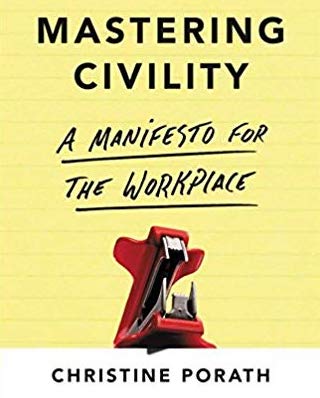
One of the dangers of dealing with incivility is like the proverbial frog in a pot of boiling water.
If a frog jumps into boiling water, he’ll jump right out.
Light the fire after the frog is in the pot, and he stays until it is too late.
With incivility we run the risk of ignoring the signs that we need to act, and act quickly.
I think we all have walked into a restaurant, store or other business, encountered some type of rudeness, turned around and left, to never return. The pot was boiling and we jumped out.
When incivility grows and becomes the norm, incivility takes a toll on almost everyone in an organization. The folks running the business, their customers, their families, their neighbors, their pets. The kick the dog effect begins.
The stressors of rudeness and disrespect infiltrate an organization, one degree at a time.
Those looking inside an organization may sense the boiling point of incivility, and jump away.
The high costs there?
We lose potential customers.
When potential customers see employees treating each other with disrespect and discourtesy, studies show that customers make other choices 80% of the time. (Porath, page 18)
We lose employees.
With incivility, not only does an organization experience a high turnover rate, but also repels quality employees due to prospective employees witnessing incivility.
Those inside the uncivil organization develop stress related symptoms and behaviors at a high rate.
Relationship difficulties at work account for about half of the significant causes of stress.
More sick days.
According to an American Psychological Association survey, on the job stress costs the US economy $500 billion a year due to sick days, work related accidents, and stress related doctor visits.
The sabotage effect.
- 48 percent intentionally decreased their work effort
- 47 intentionally decreased the time spent at work
- 38 intentionally decreased the quality of their work
- 80 lost work time worrying about the incident
- 63 lost work time avoiding the offender
- 66 said their performance declined
- 78 percent said their commitment to the organization declined
- 12 percent said they had left their job because of the uncivil treatment, and
- 25 percent admitted to taking their frustration out on customers.
(Porath, page 17)
Downhill performance.
Being treated with disrespect and discourtesy affects performance–cognitively, creatively, as a team, and more. Incivility sidelines us from work and keeps us from doing our best.
What’s the temperature of your organization? Boiling, lukewarm, or just right?
Sticks and stones may break my bones, but words will never hurt me.
But words do hurt us.
Encountering incivility, even as a casual observer, affects our emotions and behavior. Emotionally, dealing with incivility takes us off track. It keeps us from doing our best. It affects our health and our relationships.
Incivility promotes excess sick days, employee turnover, along with student and family retention and recruitment problems.
Can your organization afford these costs of incivility?
Download the worksheet to calculate your costs associated with sick days, turnover, tardiness, student retention and recruitment.
Because it is never too late to teach civility.
Additional reading:
Mastering Civility, by Christine Porath
Chapter 2, pages 14-25
Chapter 3, pages 26-37
Chapter 4, pages 38-46
by Lea Berman and Jeremy Bernard



